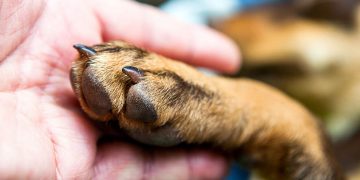About Riding Horses – Horses are amazing animals. They are intuitive, emotional, and strong. Horses are also outgoing whether they’re around humans or other horses. They’re noble animals that can be tamed by expert trainers. Riding a horse is a special experience; it relies on forging a relationship between the rider and the horse, and such an activity has various health benefits. For instance, it helps you develop good posture, boosts upper body strength, and gives you more control over your limbs. While horseback riding can be tricky to handle for beginners, it’s worth a shot unless you’ve got some training beforehand. Here are some handy tips for a great riding experience:
When approaching a horse for the first time
it’s best to approach with caution. Horses are delicate creatures, and riding them is certainly not like riding a vehicle. How the rider approaches a horse can set the tone of the whole interaction. Many horses can be timid at first, so you should approach with caution. You do not want any negative reactions, as horses may kick or bite you when they are scared. Simply start by letting the horse know, without startling it, that you are there. Slowly approach the horse and stretch out your arm for the horse to smell it; this is an inviting gesture to let the horse become familiar with you through scent. It will help if you have a treat to feed the horse.
Wear The Appropriate Gear
If you’re going to ride a horse, be sure to wear the appropriate gear. You should wear jeans or other sturdy pants, a comfortable shirt, and cowboy boots. Your pants shouldn’t be so tight that they restrict your movement; it’s best to wear a belt for any added security. A helmet is vital in case the horse makes any sudden moves; you should look for a helmet that fits snugly.
Know how to adjust your position
Whether you are a beginner or an expert. Think about how your weight affects your horse’s comfort and start from there. There are several factors in this matter, but begin by learning the suitable seating positions for both when you are in a halt and during the ride in an enclosed area. Before running with your horse in the field, your initial position should focus on dividing your weight equally over the seat bones. Work on your balance by sitting squarely with your legs hanging loose at each end of the saddle. As tempting as it may be, sit straight and not slouch; ensure that each foot is lightly rested on the stirrups (not dangling off). The heels should be angled than directed downwards for comfort.
Maintain Your Focus
Once you’re situated on your horse, it’s time to start the ride. Focus your eyes on the trail in front of you rather than on your horse. Keep a straight posture and look through the horse’s ears to be aware of your surroundings and avoid any mishaps.
Ride With Confidence
When you climb onto a horse, it is important that you do so calmly. If you are nervous, the horse will sense your unease and become uneasy as well. First lift your left leg onto the stirrup. Then gently grasp the reins with your right hand, and use your right leg to get into the saddle. Do everything in a smooth and delicate manner so as not to hurt the horse.
Riding a horse is an exhilarating experience! The feeling of freedom and adventure you get from riding a horse is unlike anything else. It also provides great exercise for your body, which is why many people like to take up horseback riding as a hobby. However, while you might be tempted to go out and buy a horse after reading this guide, there are a few things you need to consider before taking the plunge.
Horses can’t see behind them
That’s right. Horses have a blind spot directly behind them, so when you are riding, it is your responsibility to make sure that you stay behind the horse at all times. If you get too close to its heels or in front of it, the horse won’t be able to see you and could easily run over or kick you.
That being said, horses can see well on either side of their nose (looking left or right) but not directly behind themselves. This means that they can hear and smell what’s going on around them—and this also means that they will usually be very aware if something is approaching from behind!
They can bite and kick
If you’re the type of person who likes to ride horses, then chances are you’ve been bitten or kicked by one at some point. And if not, don’t be surprised if it happens sooner or later. Because horses do have teeth and they can bite. And they also kick with their hooves. The good news: there are ways for you to protect yourself from these attacks! For example, when riding a horse, you should always wear protective gear such as helmets and vests that can help cushion blow from kicks or bites. It may seem like common sense (and sometimes it is), but it often pays off big time when it comes down to injury prevention versus treatment later on down the road!
Listen to the horsewomen
Now that you’re a horsewoman, or at least working on becoming one, it’s important to listen to your horse. At the same time, it’s also just as important to listen to your horsewoman. This may seem contradictory, but trust me—listen to both of them!
In addition, listen carefully when your horsewoman speaks with her own horses—and even more carefully when she speaks with the horses belonging to other women who are also riding horses.
After all that listening has been done and you’ve gathered all of this information together in one place (which might take a while), then it’s time for action!
You don’t have to be a cowboy or cowgirl to ride a horse
You don’t have to be a cowboy or cowgirl to ride a horse. You can do it just about anywhere: the city, in a field, on trails. And if you’re not into saddles (or you’re too short for them), there are plenty of other ways to get comfortable on your horse’s back.
Horses help you overcome your fears
I’ve been riding horses for a few years now, and I can tell you that one of the most surprising things about horseback riding is that it actually helps you overcome your fears. You see, horses are patient and forgiving—they won’t ever dump you off their backs just because they don’t like your attitude. They will never yell at you or judge the way you ride or get angry if that little accident with poop happened again (which happens a lot).
In addition to being patient and forgiving, horses are also very good at helping people learn to trust others. One of my best friends has been riding since she was a little girl; when she first took lessons as an adult, she would have panic attacks before practically every lesson—the thought of riding scared her so much! But her instructor told her over and over again: “it’s okay if you fall off; just try again.” She didn’t believe them at first—but eventually learned not only how to trust herself on horseback but also how to trust other people in general.
Finally—and perhaps most importantly—riding horses has also been shown by various research studies as being good for your mental health (as well as physical health). Many times when I’m feeling anxious about something going on in my life or having trouble sleeping at night because of stress from work or schoolwork deadlines looming over my head like dark clouds threatening rainstorms…for some reason those things seem less scary when I’m sitting atop my horse enjoying the beautiful day outside with nature surrounding us both!
Know your horse
You need to know your horse’s name, where it lives and what its favourite food is. You also need to know its favourite toy and its favourite person. This can be you!
Finally, your horse will be used to a certain routine so try and break that routine as much as possible when you are riding. If the weather is nice, for example, make sure that you go for a walk somewhere different from what they are used too instead of always going on the same route around their paddock or field.
Put yourself in the horse’s shoes (literally)
It’s important to remember, as a rider, that your horse has a very different anatomy than you do. Their legs are longer than their bodies, so it’s harder for them to turn around and see behind them. Horses also have teeth and hooves that can bite and kick if they’re startled or feel threatened by something. They are prey animals—which means they are easily spooked by things like unexpected movements from other humans or wild animals—and since this is how they survive in the wild as well as domesticated situations such as stables and farms, it’s important not to be surprised if horses show signs of being scared while on trails or in open areas where predators might be present (even though there probably aren’t any).
Horses like meat. Don’t feed them carrots. Apples are ok, though.
Horses are herbivores. They have always been and always will be, so don’t try to feed them meat. Apples are fine for a horse as long as you don’t feed them too many of them. Horses can eat hay, oats and grain, but not too much at once because it makes their stomachs hurt. They can also eat grass to fill up their bellies with something other than apples if the apples run out or become too expensive (which happens from time to time). Horses can’t eat chocolate or beans, because they make horses sick when they try to eat those things. You wouldn’t want your horse getting sick on you! If a horse eats too much sugar in his diet he may develop diabetes which means he’ll need insulin shots every day for the rest of his life—and no one wants that happening!
Horses are amazing creatures, and riding is fun but dangerous.
Horses are amazing creatures, and riding is fun but dangerous. You should always respect the power of a horse in all its forms—even as an image on your computer screen. It’s easy to forget that there is a real animal behind this machine, but believe me: there is one there! And it can do whatever it wants with your data! The same goes for any other machine you may use or interact with regularly: smartphones, laptops… even cats and dogs! Think before you act around machines—and animals too!
Conclusion
Riding horses can be a lot of fun, and it’s a great way to get some exercise. But you need to know what you’re doing before you mount up! Make sure you have the right gear and check out more tips from those who have been there before: cowgirls and cowboys alike!
Read More:

























